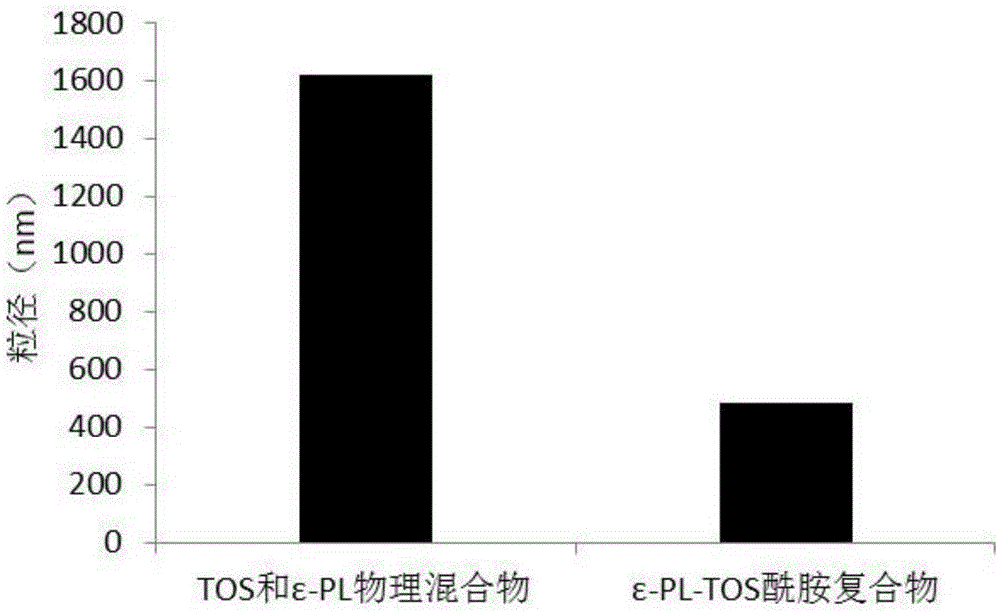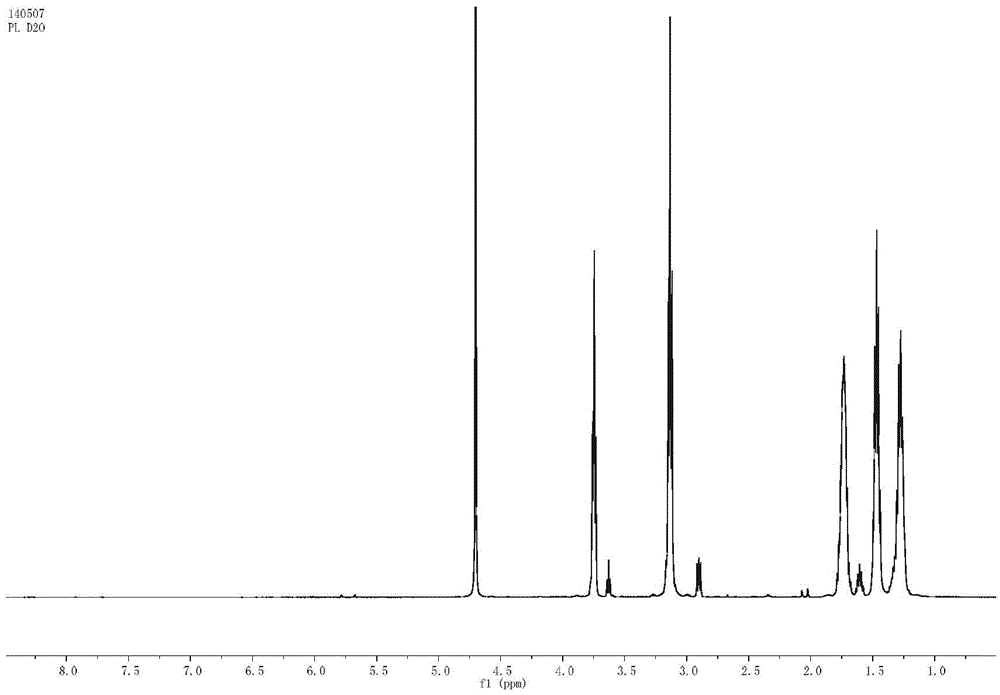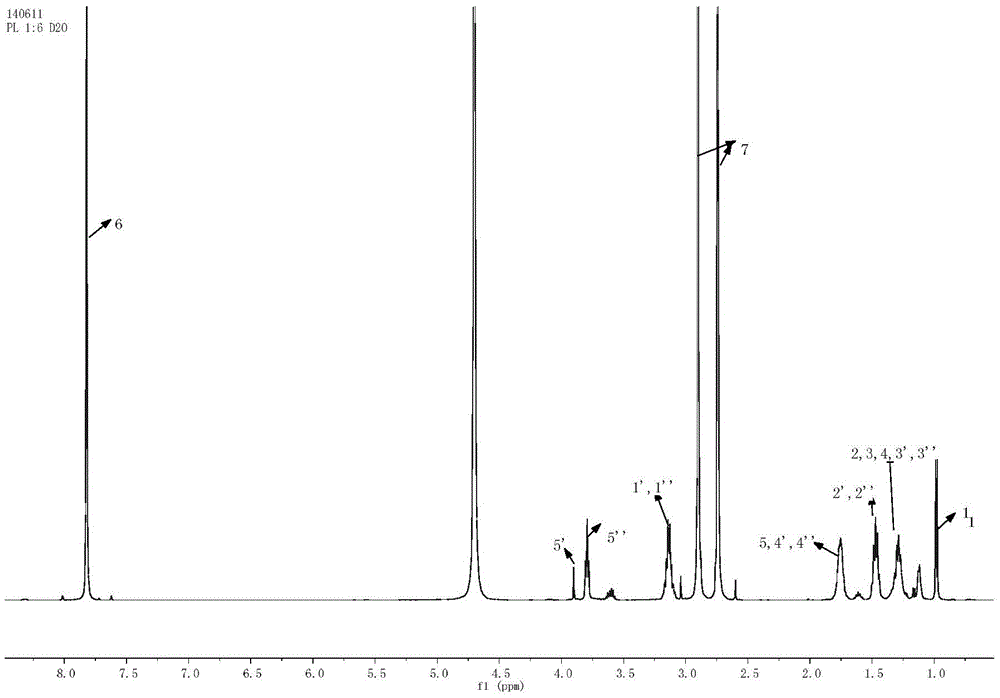ε-polylysine-vitamin e succinate amide complex and its preparation method and application
A technology of succinate amide and polylysine, applied in application, food science, food preservation, etc., can solve the problem of poor fat solubility of ε-polylysine, and achieve easy promotion, easy control, and antibacterial broad spectrum effect
- Summary
- Abstract
- Description
- Claims
- Application Information
AI Technical Summary
Problems solved by technology
Method used
Image
Examples
Embodiment 1
[0042]In a two-necked round-bottom flask, nitrogen gas was added, 2.862g ε-polylysine (ε-PL), 3.600g tocopheryl succinate (TOS), 10mL anhydrous dimethylformamide (DMF), 46.5uL Catalyst N,N'-diisopropylcarbodiimide (DIC), stirred, and reacted at 40°C for 18 hours. After the reaction was completed, ε-PL was obtained through chromatographic separation, dialysis purification, vacuum rotary evaporation, and freeze-drying -TOS amide complex.
Embodiment 2
[0044] In a two-neck round-bottom flask, nitrogen gas was added, 1.208g ε-polylysine (ε-PL), 0.955g tocopheryl succinate (TOS), 5mL anhydrous dimethylformamide (DMF), 22.5uL Catalyst N,N'-diisopropylcarbodiimide (DIC), stirred, and reacted at 40°C for 20 hours. After the reaction was completed, ε-PL was obtained through chromatographic separation, dialysis purification, vacuum rotary evaporation, and freeze-drying -TOS amide complex.
Embodiment 3
[0046] In a two-necked round-bottomed flask, nitrogen gas was added, 2.035g ε-polylysine (ε-PL), 2.275g tocopheryl succinate (TOS), 7.5mL anhydrous dimethylformamide (DMF), 34.5 uL of catalyst N,N'-diisopropylcarbodiimide (DIC), stirred, and reacted at 35°C for 20 hours. After the reaction was completed, ε- PL-TOS amide complex.
PUM
| Property | Measurement | Unit |
|---|---|---|
| particle diameter | aaaaa | aaaaa |
Abstract
Description
Claims
Application Information
 Login to View More
Login to View More - R&D
- Intellectual Property
- Life Sciences
- Materials
- Tech Scout
- Unparalleled Data Quality
- Higher Quality Content
- 60% Fewer Hallucinations
Browse by: Latest US Patents, China's latest patents, Technical Efficacy Thesaurus, Application Domain, Technology Topic, Popular Technical Reports.
© 2025 PatSnap. All rights reserved.Legal|Privacy policy|Modern Slavery Act Transparency Statement|Sitemap|About US| Contact US: help@patsnap.com



